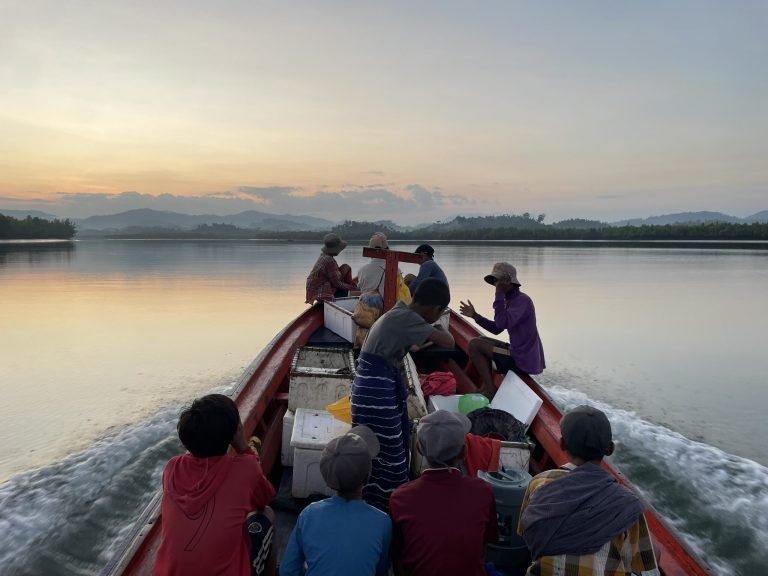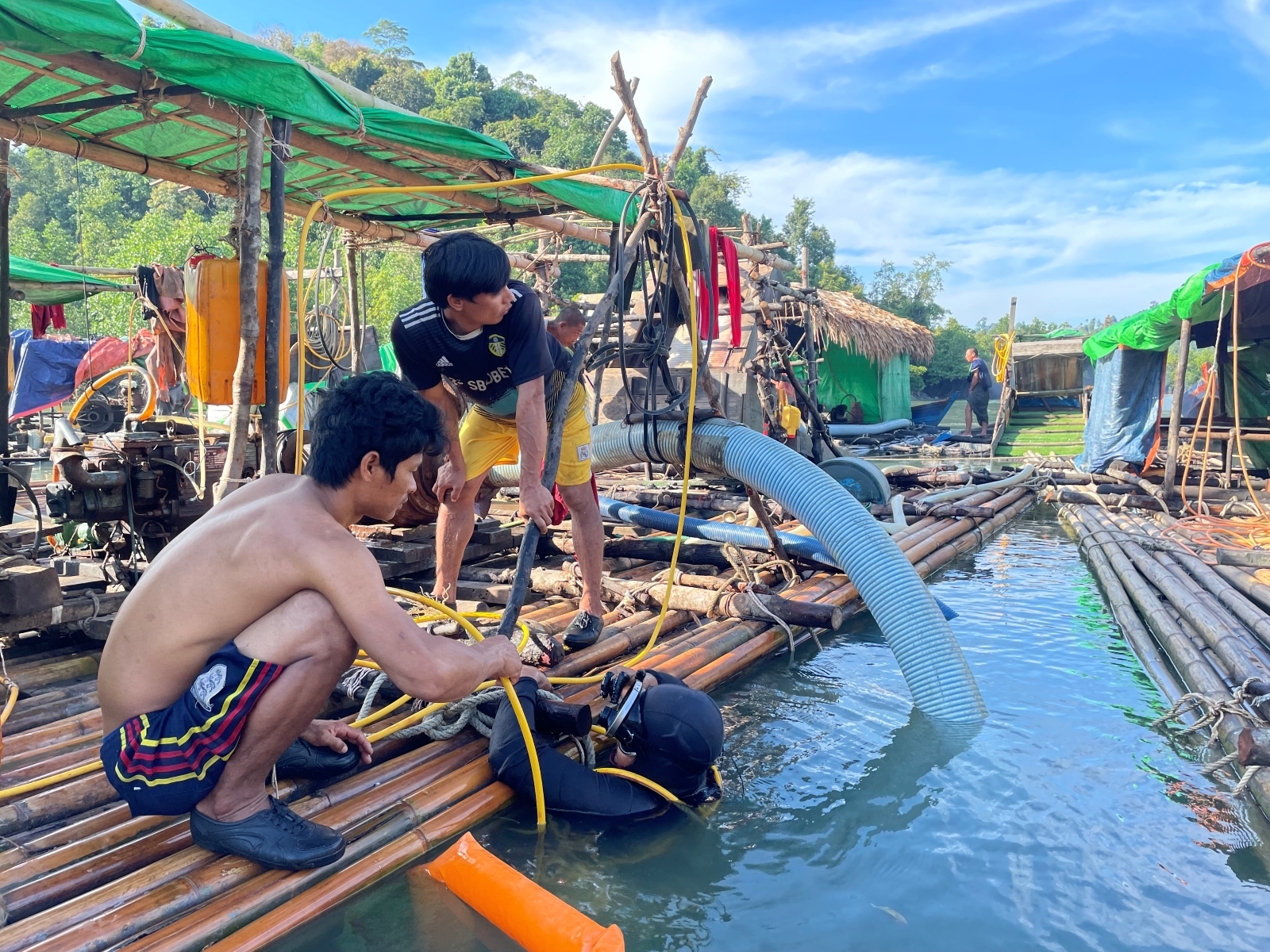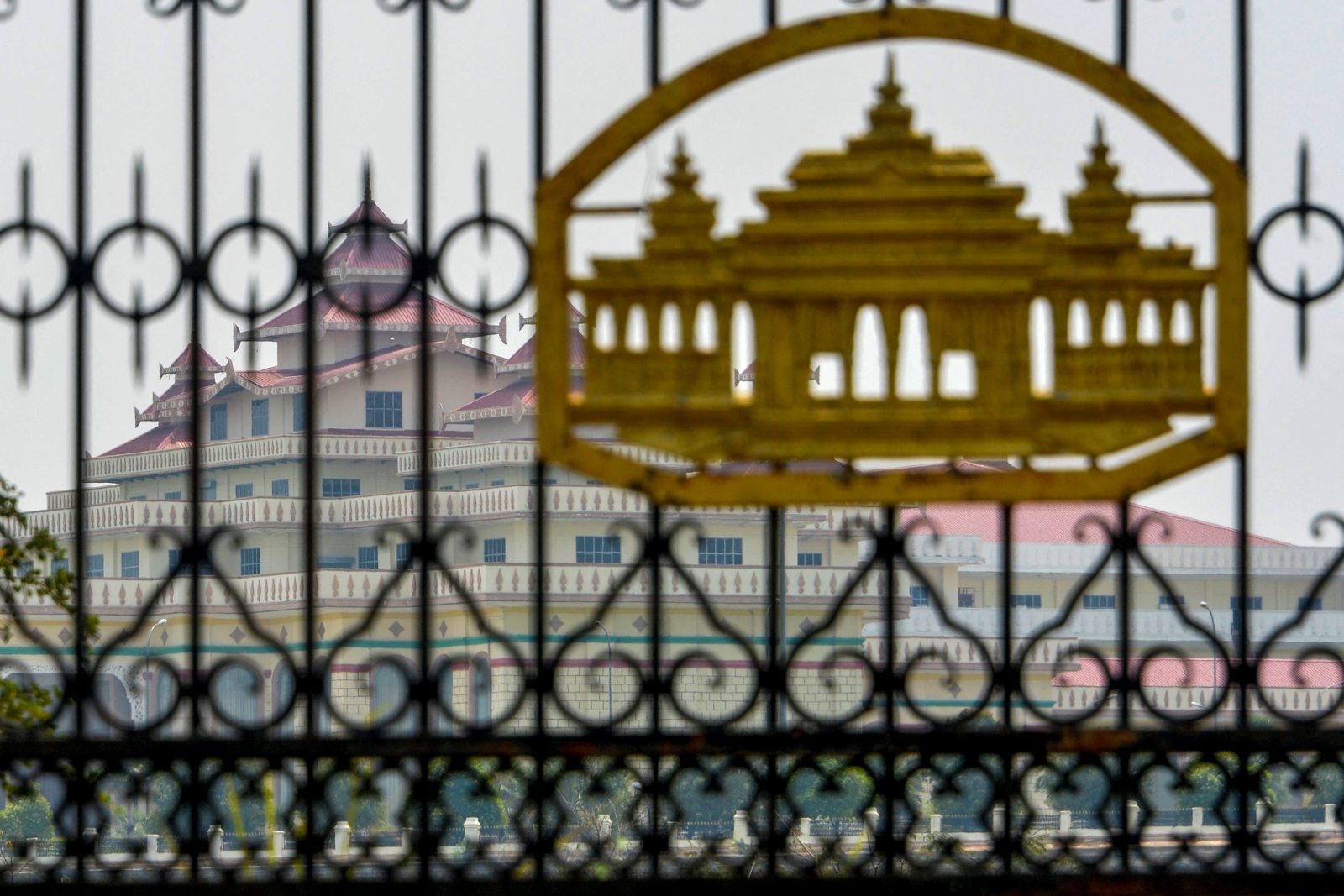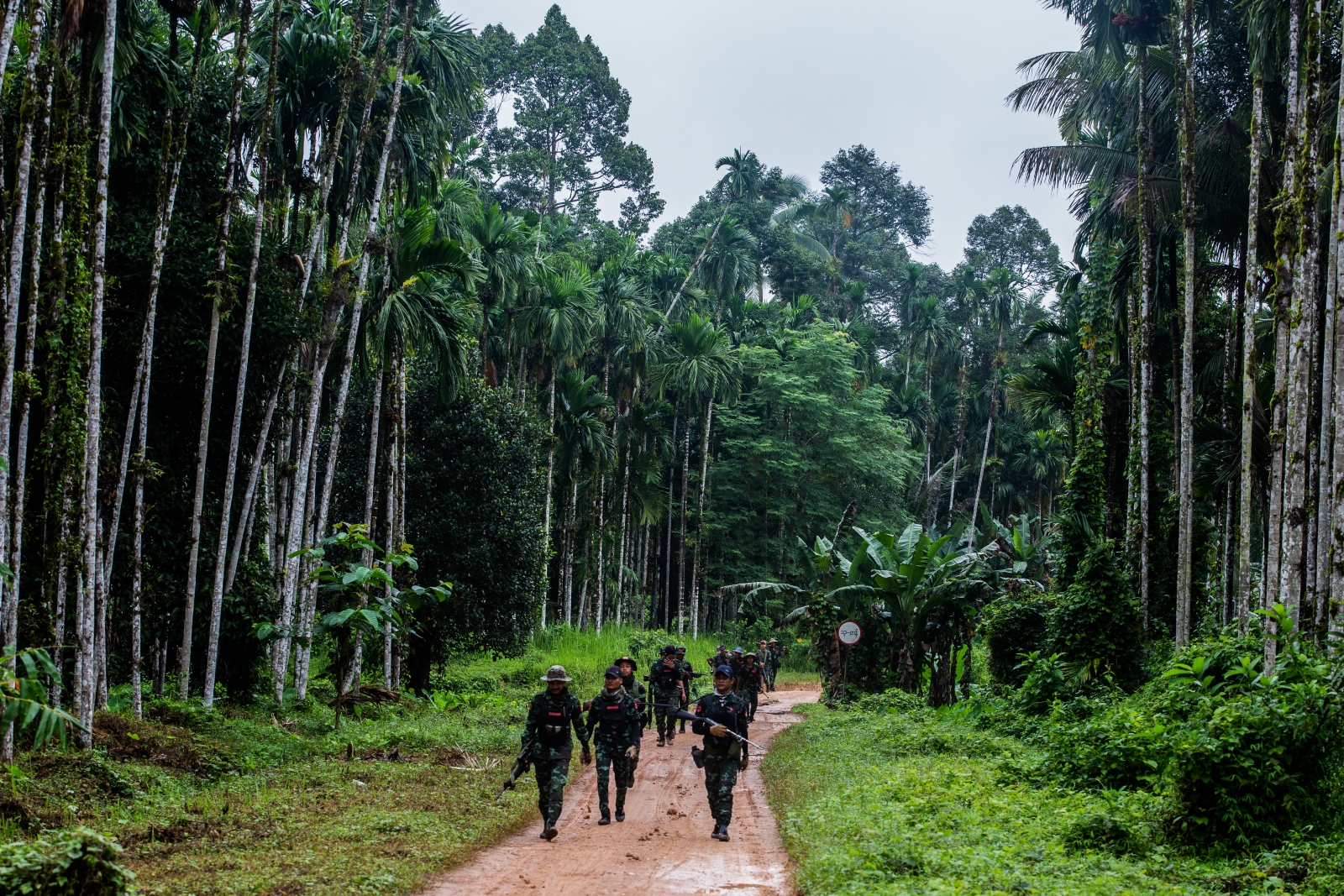Local communities say mangrove restoration projects backed by the UN are making progress in saving southern Myanmar’s depleted coastal forests while providing livelihoods.
By FRONTIER
It’s just before dawn when Ko Nyi Nyi boards one of three ferries with about 60 other men and women of all ages, each carrying a lunch box and plastic bags full of precious seedlings of rhizophora mucronata, a mangrove species.
Their destination, half an hour away across open sea from Kyein Mae Taung village, in Tanintharyi Region’s Bokpyin Township, is a nearby island whose beaches are dotted with mangrove forests.
Nyi Nyi, 23, says he’s hugely relieved to be part of a local mangrove restoration project that began near the village six months ago and is led by Worldview International Foundation, a Norwegian NGO with the declared mission of planting one billion mangrove trees globally.
“Thanks to this job, we don’t have to worry about being unemployed. Before we were always worrying about our livelihoods. Now I’m happy that I can give my mum some money at the end of every month,” Nyi Nyi told Frontier.
His family has struggled financially since his father died in 2002. The fourth of five children, Nyi Nyi previously worked on and off as a carpenter building houses, earning K15,000 (US$7) a day. Having lived in a Buddhist monastery from the age of six to 18, with the intention of becoming a monk, he never acquired the fishing skills that would have given him more reliable employment.
In late 2022 he started out on the mangroves project clearing land for a wooden barracks, earning K10,000 a day, and in May he became one of 20 salaried cultivation workers, earning K300,000 a month in wages on top of a K200,000 living allowance.
“Now that I am a regular salaried worker, I don’t have to worry about my mother,” he said, referring to the arthritis that keeps her bedridden and unable to work.
Mangroves lost
With about 500,000 hectares of mangroves along its coastline at the edge of the Bay of Bengal, Myanmar has the eighth largest area of mangroves in the world. They not only nurture highly productive and biologically rich ecosystems for many species, but also absorb huge amounts of greenhouse gases from the atmosphere and provide protection from erosion by the sea.
But Myanmar’s mangroves used to be even bigger, as vast areas of these valuable coastal forests have been swallowed up for agriculture, urban expansion and economic development since the mid-1990s. According to the United Nations Development Programme, mangroves disappeared from Myanmar at an average of 3.6 to 3.9 percent per year between 1996 and 2016.
Livelihoods were also decimated as the red mangrove trees called rhizophora mucronate disappeared. Known as byu chedauk in Burmese and payone in the local Myeik dialect, this type of mangrove is a valuable source of timber, charcoal, food, dye and also medicine.
In August last year, UNDP’ spoke of the “triple crisis” facing conservation groups in Myanmar.
“The triple crisis of conflict, Covid-19 and climate change is pushing people in Myanmar below the poverty line. It is also shifting donor focus to immediate humanitarian assistance – disrupting climate resilience efforts,” it said.
But problems began before the pandemic or the coup. Tanintharyi is famous for its high-quality mangrove charcoal, which is used for cooking and commands the best prices in both Myanmar and Thailand. Its popularity contributed to the widespread destruction of mangrove forests in Bokpyin before 2018.
Locals said charcoal making businesses have long been illegal but corruption allowed it to continue, until the National League for Democracy government, which was ousted in the 2021 coup, started to take a tougher line on large-scale manufacturers. Police and forestry officials destroyed the large charcoal kilns, although some were later rebuilt.
Naung Cho Chaung village had over 50 large kilns, but now there are only a few small-scale makers left, said one owner, who asked not to be named. Most businesses are hidden away near creeks so exact numbers are hard to ascertain.
Locals say the military regime’s administration is continuing the policy of turning a blind eye to small charcoal producers.
“Large-scale charcoal making businesses are gone now. And the police are not arresting the small-scale producers, I think because they are only doing it for their own family livelihoods and for their kids’ school fees,” said Ma Suu, a former charcoal business owner.
A ferry boat businessman operating at the Kawthaung- Ranong border gate said traders from Thailand are still buying charcoal for 6.5 baht (US$0.19) a kilo.

Providing livelihoods to local communities
Offering alternative jobs was crucial to curbing the charcoal making businesses, said a WIF staff member who requested to withhold his name.
Most locals in Bokpyin make a living catching and exporting seafood to neighbouring Thailand. But for those without fishing skills, jobs are scarce, says 40-year-old Ma Ngae who has two daughters.
“Before we had to work hard under the scorching sun. I used to wash jellyfish and dry them. I would get K20,000 a day for that. But I had to stay in the water and under the sun the whole day,” she said. Now she gets a regular salary working with a colleague to cook three meals a day for about 30 people working on the WIF project.
Working for an NGO supported by foreign donors, the employees are also covered by insurance for injuries at work and life insurance.
Providing livelihoods for local people is an important element of WIF’s strategy as it builds community support for mangrove restoration and offers an alternative to working in charcoal-making businesses.
The project has created many jobs, such as sorting out male and female mangrove fruits, working in the nursery for the workers’ children, planting the seedlings called propagules, transporting them by boat or working as kitchen staff.
WIF – supported by the UN, the Norwegian government and other donors – has managed to keep working in Myanmar despite restrictions imposed in relation to the 2021 coup and the COVID-19 pandemic.
Kyein Mae Taung villagers involved in the WIF project stressed the importance to them of conservation programmes that generate reliable sources of income.
“After the project came to our village, villagers had stable livelihoods,” said Ma Lay Lay, who used to earn a living catching crabs with her husband.
WIF is also helping to create long-term jobs through conservation projects involving seagrass – which can sequester huge amounts of carbon in the sea as well as create biodiversity hotspots – and seaweed farming. Community development schemes, such as education for local people, are also being implemented by the NGO, which has worked in Myanmar since 2012 and has a 30-year horizon for its projects in Bokpyin Township.
The WIF staff member who requested anonymity said the foundation is creating job opportunities for about 1,000 people in the villages of Chaung Ka Phee, Han Ka Chin, Thit Ngoke Toh and Kyein Mae Taung.
WIF has also carried out mangrove restoration projects in four areas of Thabaung township in Ayeyarwady Region; Thaton and Kyaikto townships in Mon State; Kungyangon, Thanlyin and Kyauktan townships in Yangon Region; and Bago Township in Bago Region.
A mangrove fruit market has also developed, with locals – many of them children – collecting payone fruit for traders who then sell them to WIF to cultivate more mangroves, making a profit of K15 per fruit. One trader said some children can make up to K20,000 a day collecting fruit.
But for now, fishing remains king.
Ma Ngae said most people still prefer to work in the fishing industry, which is more profitable, and only work on mangrove sites when fishing conditions are unfavourable due to weather or tides.
“On days like that, there are about 300 people working in the payone sites. Usually there are only about 50 people working there.”
But Nyi Nyi, who never learned to fish, now has a reason to look to the future with optimism. “I heard that they will appoint some permanent staff to conserve the mangrove forests even after the project is finished. A regular job like that would be so good for people like us,” he said.







